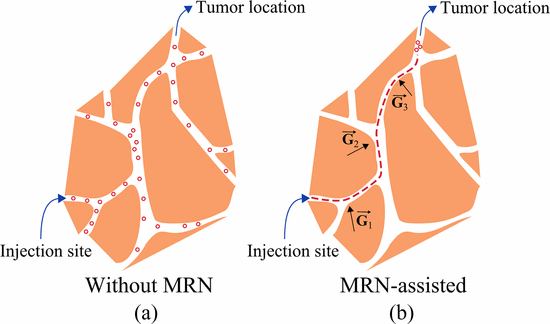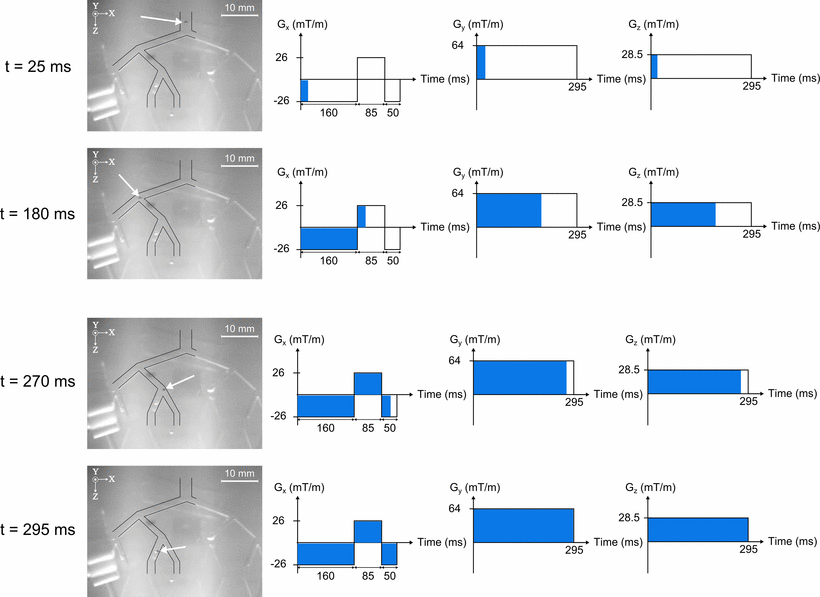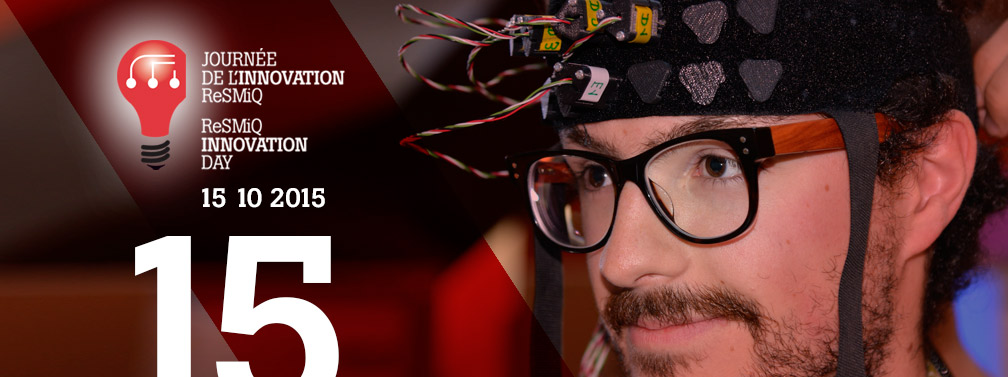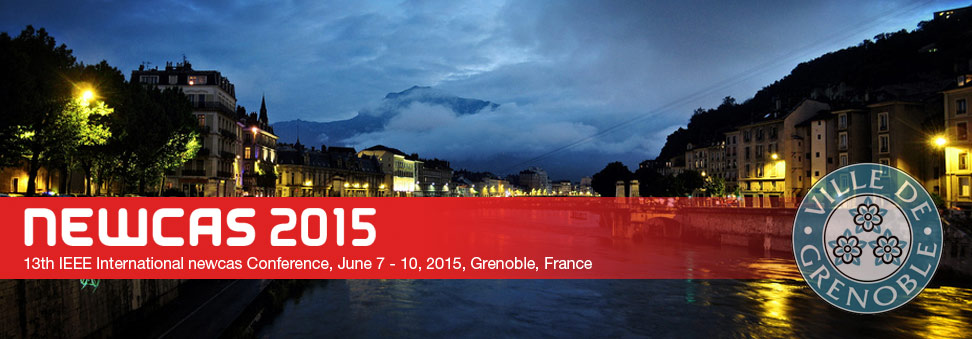UPCOMING CONFERENCES
2023 International Conference on Microelectronics (ICM)
from December 17 to 20, 2023, Abu Dhabi, United Arab Emirates.
More details
2023 IEEE 11th International Conference on Systems and Control (ICSC)
from December 18 to 20, 2023, Sousse, Tunisia.
More details
2024 37th International Conference on VLSI Design and 2024 23rd International Conference on Embedded Systems (VLSID)
from January 6 to 10, 2024, Kolkata, India.
More details
2024 IEEE International Solid-State Circuits Conference (ISSCC)
from February 18 to 22, 2024, San Francisco, California, USA.
More details
2024 IEEE 15th Latin America Symposium on Circuits and Systems (LASCAS)
from February 27 to March 1, 2024, Punta del Este, Uruguay.
More details
2024 IEEE Custom Integrated Circuits Conference (CICC)
from April 21 to 24, 2024, Denver, Colorado, USA.
More details
2024 IEEE 6th International Conference on AI Circuits and Systems (AICAS)
from April 22 to 25, 2024, Abu Dhabi, United Arab Emirates.
More details
2024 9th International Conference on Integrated Circuits, Design, and Verification (ICDV)
from June 6 to 7, 2024, Hanoi, Vietnam.
More details
2024 61st ACM/IEEE Design Automation Conference (DAC)
from June 23 to 27, 2024, San Francisco, California, USA.
More details
2024 IEEE International Conference on Multimedia and Expo (ICME)
from July 15 to 19, 2024, Niagara Falls, Ontario, Canada.
More details
MEMBER PROFILE
Prof. Sylvain Martel
Polytechnique Montréal
Member of ReSMiQ since 2001
 Sylvain Martel received the Ph.D. degree in Electrical Engineering from McGill University, Montreal, Canada. Following his postdoctoral studies at the Massachusetts Institute of Technology (MIT), he was appointed Research Scientist at the BioInstrumentation Laboratory at MIT. Dr. Martel had several positions in the Canadian Naval Reserve as ship’s diver and supervisor, navigator, operations officer and participated in several NATO exercises. He had dual appointments at MIT and as Assistant Professor in the Department of Computer Engineering and the Institute of Biomedical Engineering at Polytechnique Montréal (PM). He is currently Professor in the Department of Computer Engineering and Director of the NanoRobotics Laboratory at PM that he founded in 2002. Dr. Martel holds the Canada Research Chair (CRC) in Micro and Nanosystem Development, Fabrication, and Validation. He has filed six patents, is the author or coauthor of more than 200 refereed publications, gives several invited presentations annually, and he is an active member of many international committees and organizations worldwide. Professor Martel has received several awards and distinctions such as the Queen Elizabeth II Diamond Jubilee Medal, the ACFAS - Jacques-Rousseau Award, the Innovator of the year by Montreal In Vivo, among other distinctions from international conferences, institutions and mass media. He recently received the title of IEEE Fellow for his contributions to medical micro- and nano-robotic and he is also Fellow of the Canadian Academy of Engineering. More information
Sylvain Martel received the Ph.D. degree in Electrical Engineering from McGill University, Montreal, Canada. Following his postdoctoral studies at the Massachusetts Institute of Technology (MIT), he was appointed Research Scientist at the BioInstrumentation Laboratory at MIT. Dr. Martel had several positions in the Canadian Naval Reserve as ship’s diver and supervisor, navigator, operations officer and participated in several NATO exercises. He had dual appointments at MIT and as Assistant Professor in the Department of Computer Engineering and the Institute of Biomedical Engineering at Polytechnique Montréal (PM). He is currently Professor in the Department of Computer Engineering and Director of the NanoRobotics Laboratory at PM that he founded in 2002. Dr. Martel holds the Canada Research Chair (CRC) in Micro and Nanosystem Development, Fabrication, and Validation. He has filed six patents, is the author or coauthor of more than 200 refereed publications, gives several invited presentations annually, and he is an active member of many international committees and organizations worldwide. Professor Martel has received several awards and distinctions such as the Queen Elizabeth II Diamond Jubilee Medal, the ACFAS - Jacques-Rousseau Award, the Innovator of the year by Montreal In Vivo, among other distinctions from international conferences, institutions and mass media. He recently received the title of IEEE Fellow for his contributions to medical micro- and nano-robotic and he is also Fellow of the Canadian Academy of Engineering. More information
Below is a selection of publications in recent years followed by representative work.
Lalande V., Gosselin F.P., Vonthron M., Conan B., Tremblay C., Beaudoin G., Soulez G., and Martel S., “In vivo demonstration of magnetic guidewire steerability in a MRI system with additional gradient coils”, Medical Physics, 42, 969-976, 2015.
Bigot, A.; Tremblay, C.; Soulez, G.; Martel, S., "Magnetic Resonance Navigation of a Bead Inside a Three-Bifurcation PMMA Phantom Using an Imaging Gradient Coil Insert", IEEE Transactions on Robotics, vol.30, no.3, pp. 719-727, 2014.
Martel S., Taherkhani S., Tabrizian M., Mohammadi M., de Lanauze D., and Felfoul O., "Computer 3D Controlled Bacterial Transports and Aggregations of Microbial Adhered Nano-components," Invited paper, Journal of Micro-Biorobotics, , Vol. 9, Issue 1-2, pp 23-28, 2014.
De Lanauze, D., Felfoul, O., Turcot, J.-P., Mohammadi, M., Martel, S. Three-Dimensional Remote Aggregation and Steering of Magnetotactic Bacteria Microrobots for Drug Delivery Applications. International Journal of Robotics Research, 33(3), p. 359-374, 2014.
Vidal, G., Martel, S. Measuring the Magnetophoretic Characteristics of Magnetic Agents for Targeted Diagnostic or Therapeutic Interventions in the Vascular Network. Journal of Micro-Bio Robotics, 8(2), p. 65-71, 2013.
Olamaei, N., Cheriet, F., Martel, S. Magnetic Resonance Imaging of Microvessels Using Iron-Oxide Nanoparticles. Journal of Applied Physics, 113(12), 2013.
Sharafi, A., Olamaei, N., Martel, S. A New Communication Method for Untethered Intelligent Microrobots. 2013 IEEE, p. 559-564, 2013.
RESEARCH CONTRIBUTIONS
Magnetic Resonance Navigation of a Bead Inside a Three-Bifurcation PMMA Phantom Using an Imaging Gradient Coil Insert
MRN is a fairly new technique which exploits both the high magnetic field of an MRI scanner and the magnetic gradients generated by a coil to steer a carrier vehicle embedding a functional drug inside the human vessel network. Such technology is a promising research area which aims at improving the localized delivery of theranostics agents toward a disease region of the body while maintaining low systemic drug concentration (see Fig. 1). MRN can potentially improve therapies such as liver and brain chemoembolization by serially navigating single boluses to a disease site to reach a given dose locally. This paper reports the successful navigation of a 1-mm Chrome-Steel bead along three consecutive polymethyl methacrylate channels inside the bore of a 1.5-T magnetic resonance imaging (MRI) scanner (see Fig. 2). The bead traveled at a mean velocity of 14 cm s-1. This was accomplished using an imaging gradient coil (IGC) insert located inside the MRI tube. While targeting one side of a bifurcation has been previously demonstrated using unidirectional gradient coils, this is the first time that magnetic resonance navigation (MRN) of a bead along consecutive channels is reported. Experimental results confirm that a clinical regular MRI can be used to propel a 1-mm device. In addition, when used at maximum power, IGC temperature rise becomes a serious issue that can ultimately damage the insert and limit the overall performance. Consequently, this paper aims to give some insight into coil temperature management for IGC-assisted procedures. A 33-min thermal stress test was carried out using 100% of the IGC power. Steady-state oscillation can be reached by interleaving propulsion periods with cooling periods, thus enabling longer propulsion procedures. Experimental data showed that the cooling time can be used for imaging purposes with no performance loss, thus enabling MRN-assisted procedures with multiplexed particle distribution assessment.

Fig. 1: Representation of a vascular network. Empty circles are microvectors embedding imaging or therapeutic agents. (a) Current chemoembolization procedure is done by injecting chemotherapeutic drug from a catheter—the injection site—toward a tumor with no control over the injected particles. (b) By correctly applying consecutive magnetic gradients G1, G2, and G3, MRN-assisted chemoembolization could potentially enable the control of the injected vectors to serially navigate them from the injection site toward the disease site (dashed line), thus preserving parenchyma healthy tissues.

Fig. 2: Navigation of Bead Inside a Phantom. Each row represents a different time frame for the propulsion sequence − + −. The first column contains raw images of the footage. Arrows indicate the bead location and the black lines indicate the edges of the channel. The second column schematically depicts the evolution and the current state (blue coloring) of x-, y-, and z-gradients at the corresponding time frame. The directions of the gradients are shown in the top-left.







 Sylvain Martel received the Ph.D. degree in Electrical Engineering from McGill University, Montreal, Canada. Following his postdoctoral studies at the Massachusetts Institute of Technology (MIT), he was appointed Research Scientist at the BioInstrumentation Laboratory at MIT. Dr. Martel had several positions in the Canadian Naval Reserve as ship’s diver and supervisor, navigator, operations officer and participated in several NATO exercises. He had dual appointments at MIT and as Assistant Professor in the Department of Computer Engineering and the Institute of Biomedical Engineering at Polytechnique Montréal (PM). He is currently Professor in the Department of Computer Engineering and Director of the NanoRobotics Laboratory at PM that he founded in 2002. Dr. Martel holds the Canada Research Chair (CRC) in Micro and Nanosystem Development, Fabrication, and Validation. He has filed six patents, is the author or coauthor of more than 200 refereed publications, gives several invited presentations annually, and he is an active member of many international committees and organizations worldwide. Professor Martel has received several awards and distinctions such as the Queen Elizabeth II Diamond Jubilee Medal, the ACFAS - Jacques-Rousseau Award, the Innovator of the year by Montreal In Vivo, among other distinctions from international conferences, institutions and mass media. He recently received the title of IEEE Fellow for his contributions to medical micro- and nano-robotic and he is also Fellow of the Canadian Academy of Engineering.
Sylvain Martel received the Ph.D. degree in Electrical Engineering from McGill University, Montreal, Canada. Following his postdoctoral studies at the Massachusetts Institute of Technology (MIT), he was appointed Research Scientist at the BioInstrumentation Laboratory at MIT. Dr. Martel had several positions in the Canadian Naval Reserve as ship’s diver and supervisor, navigator, operations officer and participated in several NATO exercises. He had dual appointments at MIT and as Assistant Professor in the Department of Computer Engineering and the Institute of Biomedical Engineering at Polytechnique Montréal (PM). He is currently Professor in the Department of Computer Engineering and Director of the NanoRobotics Laboratory at PM that he founded in 2002. Dr. Martel holds the Canada Research Chair (CRC) in Micro and Nanosystem Development, Fabrication, and Validation. He has filed six patents, is the author or coauthor of more than 200 refereed publications, gives several invited presentations annually, and he is an active member of many international committees and organizations worldwide. Professor Martel has received several awards and distinctions such as the Queen Elizabeth II Diamond Jubilee Medal, the ACFAS - Jacques-Rousseau Award, the Innovator of the year by Montreal In Vivo, among other distinctions from international conferences, institutions and mass media. He recently received the title of IEEE Fellow for his contributions to medical micro- and nano-robotic and he is also Fellow of the Canadian Academy of Engineering. 
